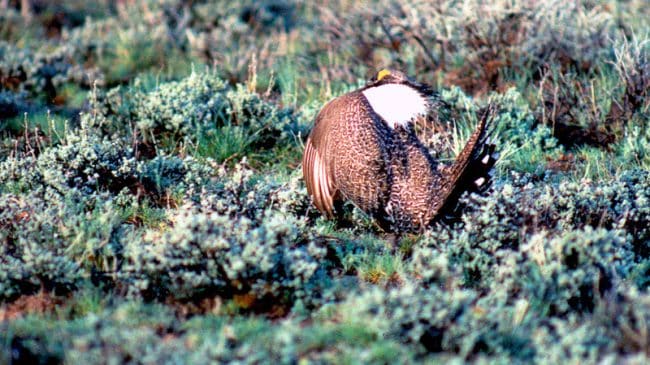Today the federal government takes a significant step to reinforce what has become increasingly clear over the Endangered Species Act’s forty-year history: the law’s penalty-based approach causes enormous harm to the very species it is supposed to protect.
The decision today to list the Gunnison sage grouse leaves the bird, its cousin the greater sage grouse, and many other imperiled species facing bleaker futures. Listing deters not only conservation in the Gunnison sage grouse’s Colorado and Utah range, but also conservation in many states, communities and businesses across the country that are working very hard to conserve imperiled species, prevent their listing and avoid the Endangered Species Act’s punitive and expensive regulations.
This is especially true for by far the biggest listing decision in the Act’s history; it seems enormous conservation efforts at a price of more than $1 billion were not able to prevent the greater sage grouse’s listing, which could cost 32,000 jobs and $5.6 billion in annual economic output across eleven western states and 165 million acres.
Greg Walcher, who was heavily involved in sage grouse conservation as Executive Director of the Colorado Department of Natural Resources from 1999-2004, asserts, “Massive investment and local participation was made with the clear understanding that the Gunnison sage grouse would not be added to the federal endangered species list.”
Gunnison County, which contains 93 percent of the grouse’s population, is ground zero for conservation efforts that include hiring the nation’s only full-time municipal endangered species biologist, stringent sage grouse-specific zoning ordinances, forming a working group in 1995 to organize and implement conservation initiatives, and protecting 97 percent of privately owned habitat with various agreements.
This private land is part of the 64,000 acres of sage grouse habitat in Colorado under conservation easements that cost the state $30 million and the 126,500 acres in a federally-approved Candidate Conservation Agreement with Assurances, which was sold to people, especially the forty-seven landowners who enrolled their land, as key to preventing listing.
“Nobody could do more than we’ve done,” Paula Swenson, chair of the Gunnison County Board of Commissioners, told the Denver Post.
The result has been a healthy, slowly increasing grouse population, most notably in Gunnison County. Despite all of this, the federal government has reneged and listed the grouse.
Communities and landowners in Colorado and Utah feel deeply betrayed and anxious because of the Endangered Species Act’s much-feared land and resource use regulations. “The community most impacted – ours – overwhelmingly opposes [listing the grouse]” states Chris Dickey, publisher of the Gunnison Country Times, a weekly newspaper and website. “The Gunnison Basin is a model for a community’s conservation-minded response to an imperiled species.”
The sage grouse also loses due to its listing. “A listing will have a lot of people saying, ‘I’m done,'” Jonathan Houck, Gunnison County Commissioner, told the Post. “I don’t mean we’re going to purposely bring harm to the bird and the habitat. But if you voluntarily alter how you work your land and that’s not enough, it sends a clear shot across the bow. It says, ‘Why put in the effort, why put in the money, why tax your resources? Because in the end it will never be enough.'”
John Swartout, Colorado Gov. Hickenlooper’s point person on sage grouse, remarked to the Denver Post,“What private landowner in [Colorado’s three counties with greater sage grouse] is going to step up to work with us?”
The federal government, and environmental lawsuit mills that pushed for listing, have so overreached that Democrat Gov. Hickenlooper has pledged to sue the Obama administration’s Interior Department to rescind the listing.
The listing of the Gunnison sage grouse will have a lot of people around the country asking the same questions as Commissioner Houck and John Swartout. This is the sad but predictable result inherent in the Endangered Species Act’s penalty-based approach to conserving species. Only when the penalties are removed will conservation be truly successful. This is entirely attainable because the U.S. Department of Agriculture has a wide range of highly successful conservation programs that rely on the open hand of friendship, not the closed fist of regulation, to gain landowners’ participation. The path to successful endangered species conservation goes in the opposite direction of the Endangered Species Act.
Brian Seasholes is director of the endangered species project at Reason Foundation. This article originally appeared at The Daily Caller.
